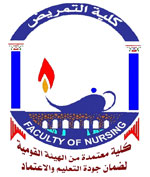Sleep disturbance are common in the general adult population, and as the population ages. Among several changes that occur with ageing, changes in sleep quality and quantity can be the most difficult for many older adults. The aim of this study was to improve elderly knowledge and practice related to sleep disturbance. The aim was to be reached through achievement of the following objectives: To assess elderly knowledge and practice concerning sleep disturbance; To develop and implement an educational training program about sleep disturbance and To evaluate the effect of educational training program on elderly knowledge and practice. A quasi-experimental design was used in carrying out this study, with pre-post assessment. This study carried out in outpatient clinics at Assiut University Hospital. It includes diabetes mellitus, chest, cardiac, cancer, hypertension, hepatitis viruses and physiotherapy clinics.
The sample included 200 elderly patients suffering from sleep disturbance. An interview questionnaire sheet was developed by the researchers based on a review of relevant literature. It consists of three main parts: Part I: It includes items related to socio-demographic characteristics such as age, sex, educational level and marital status Part II: It includes items related to history of medical problems and information regarding sleep condition. Part III: program about exercise and sleep hygiene tips it include question about importance of exercise, technique of exercise and tips to improve sleep condition. Data was collected in a period of 6 months starting from January 2012 to the end of June 2012. Results: Two hundred adults aged ≥ 60 years with sleep disturbance mean age 63.17 SD ±3.9 years; 46% male & 54% female. The vast majority of the elderly had complained from coronary disease, diabetes, osteoporosis and osteoarthritis. The majority of sample 87.5% had drinking tea before sleep and the minority 10.5% of them practice exercises also 40.0 % of them take antihypertensive drugs and only 8.5% of them take hypnotics drug. After the program they improved in sleep quality on the sleep latency period (p=0.04), sleep duration (p=0.001), and also had reductions in use of sleep medications (p=0.000). As regards to elderly knowledge about sleep hygiene tips it was found that there is statistical significance difference before and after program about sleep hygiene tips. Based on the findings of this study, it is concluded that the educational program which includes the moderate intensity physical exercise plus sleep hygiene education is effective in improving self reported sleep quality and quality of life in older adults with sleep disturbance. In The light of these results, it is recommended to that general approach to detecting sleep disorders in an ambulatory setting. Patient with sleep disturbance should be educated about good exercise, sleep hygiene, home ventilation, and balanced diet. It can be achieved through mass media, health classes in different health agencies.
Research Department
Research Journal
Journal of American Science
Research Member
Research Publisher
NULL
Research Rank
1
Research Vol
Vol. (9), No. (5)
Research Website
http://www.jofamericanscience.org
Research Year
2013
Research_Pages
193-202
Research Abstract

